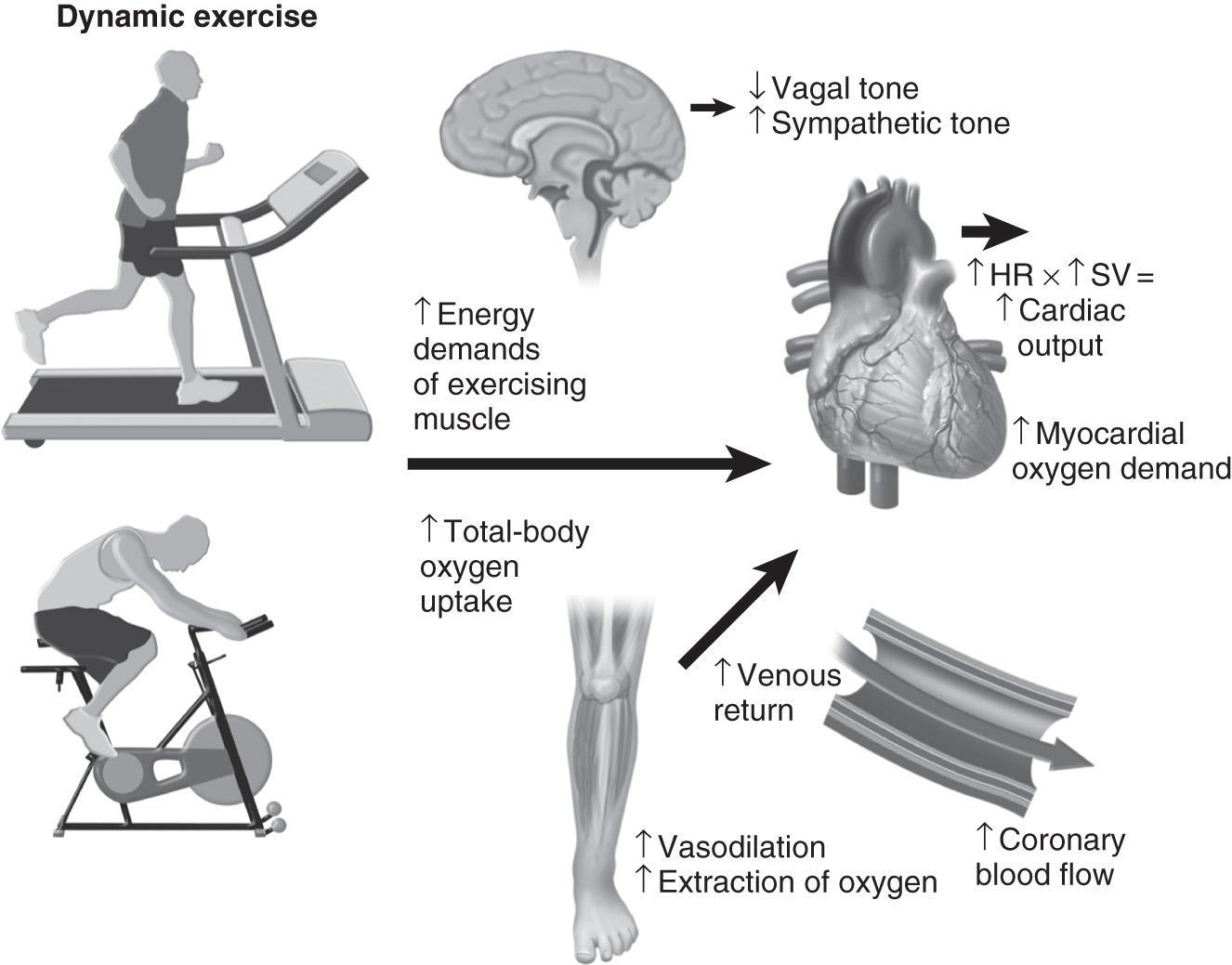Physical Address
304 North Cardinal St.
Dorchester Center, MA 02124
Physical activity is skeletal muscle contraction causing body movement that requires energy use. Exercise is a type of planned physical activity that is performed to attain or maintain physical fitness. Physical activity can be classified metabolically as anaerobic (energy derived in the absence of oxygen) or aerobic (energy derived in the presence of oxygen). Physical activity is defined mechanically as activity that produces limb movement without a change in muscle tension ( isotonic exercise, more commonly known as aerobic, endurance, or dynamic exercise, includes activities such as walking, running, swimming, cycling), or activity that causes muscle tension without limb movement ( isometric exercise, more commonly known as resistance exercise, such as weight lifting). Most physical activity and exercise include a combination of isometric and isotonic activities.
Intensity is the rate of energy expenditure during physical activity per unit of time. It can be measured directly using respiratory gas analysis during exercise to quantify oxygen uptake. Intensity is usually expressed relative to resting energy expenditure, where 1 metabolic equivalent (MET) equals a resting energy expenditure of approximately 3.5 mL O 2 /kg/min. Light activities are 2 to 2.9 METs, moderate activities 3 to 5.9 METs, and vigorous activities greater than 6 METs.
Relative Intensity is related to individual cardiorespiratory fitness. It is expressed as the percentage of maximal exercise capacity performed during exercise and can be reported as the percentage of maximal heart rate (HR) or maximal oxygen uptake (VO 2max ).
Relative intensity can further delineate the intensity of activity interpretation. For example, walking is considered a moderate-intensity (3–5.9 METs) activity. Walking briskly at 3 mph has an intensity of about 4 METs; however, the relative intensity is considered light for a healthy 20-year-old, as opposed to vigorous for an 80-year-old. Activities with moderate relative intensity usually occur at 40% to 60% of VO 2max .
Traditionally, physical activity measurements have been obtained through self-report, which is limited by over- and underestimation of true physical activity. New mobile health technologies, such as pedometers, accelerometers, and HR monitors via smartphone applications and wearable devices that are commercially available, are able to directly and accurately measure physical activity. Most simple devices can measure activity such as steps/day or distance walked. Advanced models can provide reliable information on frequency, intensity, and duration of physical activity.
Aerobic activities cause HR and stroke volume to increase, producing a four- to sixfold increase in cardiac output among healthy individuals. This occurs through several mechanisms. With aerobic activities, there is decreased vagal tone and increased sympathetic tone, resulting in increased HR. A gradual increase in HR to a maximum can be predicted from the following formula:
Maximum predicted HR = 220 – age (in years).
Increased venous return from exercising muscle, coupled with increased left ventricular emptying from decreased systemic vascular resistance due to vasodilation in exercising muscle and improved myocardial contractility, yields a 20% to 50% increase in stroke volume. Vascular beds outside the heart, brain, and exercising muscle vasoconstrict and with increased cardiac output, systolic blood pressure increases while diastolic blood pressure remains the same to slightly lower.
Resistance activities cause increased HR and thereby increased cardiac output. Contraction in exercising muscle increases peripheral vascular resistance, resulting in increased systolic and diastolic blood pressure. The physiologic responses to exercise are illustrated in Fig. 45.1 .

Over time, isotonic activities associated with increased venous return and cardiac output result in left ventricular dilation with minimal increase in wall thickness. Chronic isometric activities result in increased left ventricular wall thickness with normal left ventricular dimensions.
Regular participation in aerobic exercise improves exercise capacity, whereas regular participation in resistance exercise increases strength. The training effect refers to these physiological changes, which allow individuals to exercise at a higher intensity for longer duration while achieving lower HRs at submaximal levels of exercise.
Both types of activities improve insulin resistance, bone mineral density, and body composition. Both types of training can have beneficial effects on reducing fat mass. Endurance activities improve peak exercise capacity and increase caloric expenditure while performing these activities. Resistance training increases strength and resting energy expenditure through increased muscle mass.
Become a Clinical Tree membership for Full access and enjoy Unlimited articles
If you are a member. Log in here